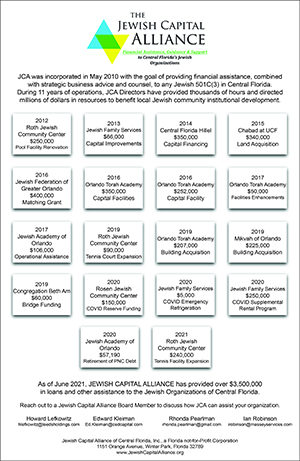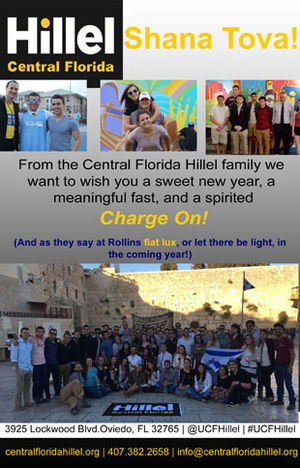Minorities and the IDF-The IDF Sword Battalion
April 28, 2017
Two non-Jewish minority communities in Israel, the Druze (a deviant Shi’a Muslim group) and Circassians (Sunni Muslims whose ancestors were exiled to Palestine from the Caucasus), are subject to mandatory conscription to the IDF. Additionally, members of several Bedouin tribes volunteer as well as a growing number of individual Muslim and Christian Arabs.
The decision of the first two groups to accept obligatory service in a special “minorities unit” the Israeli military forces was made at their own request. As early as the summer of 1948, after years of intense pressure by the Palestinian Higher Arab committee to join in the fight to prevent a Jewish state, units of the three groups defected and switched sides to fight with the Jews.
Since then, the unit has fought with distinction in every war. Today, the unit is also the natural choice for a growing number of Christian and Muslim Arab volunteers. Since 1987 it has been designated as The IDF Sword Battalion (Hebrew: Gdud Herev). Since the 1980s however, Druze, Circassian and individual Arab and Bedouin soldiers at their own request have joined regular combat units, attaining high ranks and commendations for distinguished service.
A small but not insignificant degree of Arab collaboration with the Jews during the Mandate took the form of facilitating the sale of land to Jewish settlers, the provision of vital security intelligence, political propaganda, even arms smuggling and military assistance as well as eventual conscription in the IDF.
It is no exaggeration to claim that in the light of these many revelations (supported by investigations into the archives of the Palestinian leadership and Arab press in Mandatory Palestine) to assert that without the invaluable cooperation with dissident Arab elements opposed to the mainstream Arab Executive Committee, the Zionist movement might not have been able to achieve a Jewish state.
What is even more amazing is that Palestinian Arab cooperation with Jewish settlers during the Mandate came predominantly from conservative and traditional rural Muslim circles, attracted by economic opportunities, employment, new markets, agricultural techniques, medical care, city life, Jewish girlfriends or simple bribery.
It was the Palestinian Higher Arab Committee that willfully misguided, misinformed, and inflamed a large section of public opinion among the Arab community that there could not be any compromise and all who spoke or acted on its behalf were “traitors.” These traitors who all worked for Jewish-Arab cooperation include such luminaries as the Arab mayor of Haifa. This year is the 75th anniversary of the death of Hasan Bey Shukri, the first mayor of modern Haifa.
Shukri was born in 1876 in Jerusalem to a family in the highest levels of Ottoman officialdom. His family moved to Haifa when he was young, and the Turks appointed him mayor in 1914. Throughout his tenure as mayor, Shukri displayed a positive, conciliatory attitude toward the Jewish community and gave them senior posts in the municipality as well as recognizing Hebrew as an official language of Haifa alongside of Arabic in 1927. In 1933, he opened up city tenders to Jewish contractors as well as Arab ones.
Shukri was targeted by Arab assassins numerous times. Labor leader Sami Taha and many lesser Arab officials and politicians as well as village chieftains (all assassinated by agents of the Mufti) worked closely with the Histadrut and refused to cooperate with the many strikes called by the reactionary and extremist leadership headed by the Grand Mufti.
Many friends of Israel are aware of this past history or that the Druze, Circassian and Bedouin veterans of the IDF have suffered casualties and fatalities in excess of the Jewish population as a percentage of their relative populations. According to IDF statistics more than 80 percent of Druze and Circassians serve in the army. Almost 400 have been killed in combat operations since 1948.
The “non-Jewish” communities
The official number of Arab residents and non-Jews in Israel is more than 1,600,000 people - almost 20 percent of Israel’s population of eight million. This figure includes approximately 300,000 Arabs in East Jerusalem, under Israeli control since 1967. About 82.6 percent of the Arab population in Israel is Sunni Muslim (with a very small minority of Shia), another 9 percent is Druze, and around 9 percent is Christian (mostly Oriental Orthodox and Catholic denominations).
The three “minority within a minority” communities of Druze, Circassians and Bedouins sought alliances with the Jews to afford themselves a counterweight against pressure from the Sunni Arab majority. Strong rivalries among and within clans, regions, villages, religions (Muslim and Christian) and political interests persisted during the Mandate.
The growing expansion of Arab industry and agriculture, especially related to the prosperous cultivation of citrus, olives, cereals, and grapes, led to fear by the conservative and moderate religious leadership that extremist politics would jeopardize this prosperity. The Muslim effendi class resented the extremist Muslim forces of the Husseini clan using the ideology of Pan-Arab nationalism
Scores of Arab villages signed non-aggression agreements with neighboring Jewish settlements, kibbutzim, and towns not to permit their homes to be used as bases for attacks. Many of the Arab villages where the population objected strongly to the presence of foreign Arab military forces who tried to press-gang them into joining in the hostilities, ejected them or even provided Jewish settlements with important information.
The Druze
The Israeli government designated the Druze a distinct ethnic community in 1957 at the request of its communal leaders. They number about 150,000 and constitute 2 percent of Israel’s population. Before the establishment of the State of Israel, the Druze were not recognized as a religious community. They were regarded as a deviant sect by the majority Sunni Muslim religious authorities. They live mainly in the north of the country. Many Druze have attained top positions in the military, Israeli politics and public service, although initially when conscription was first accepted by the community’s leadership in 1956. For regular army service, there was considerable opposition.
The Circassians
The Circassian community numbers approximately 5,000 and resides primarily in two Galilean villages, Kfar Kama and Rehaniya. Nowadays, the Circassian community in Israel is well integrated into Israeli society, speak their ancestral Turkic language, Adyghe (in addition to learning Hebrew, Arabic and English in elementary school), while cultivating their unique heritage and culture. The Israeli Circassians have had good relations with the Jewish community in Israel since the beginning of the pre-state Jewish settlement in the Land of Israel due in part to knowledge of the Russian language shared with many of the First Aliyah immigrants who settled in the Galilee. They also helped the illegal migration of Jews from Lebanon and Syria into Mandate Palestine. Many in Israel are employed in the Israeli security forces, including in the Israeli Border Police, the Israeli Defense Forces, and the Israeli Prison Service. The percentage of the army recruits among the community in Israel is particularly high.
The Bedouin and the Special Tracker Unit
Each year, between 5 percent-10 percent of the Bedouin of draft age volunteer for the Israeli army. They are not required by law to do so. Many serve as trackers in the IDF’s elite units, securing the border from infiltration. Israel’s Bedouins number about 45,000 classified into 22 distinct tribes. In recent years, voluntary recruitment has varied from 90 to several hundred men among the 1,500-plus Bedouin eligible to join up each year.
By any yardstick you choose—educational opportunity, economic development, women and gay’s rights, freedom of speech and assembly, legislative representation—Israel’s minorities fare far better than any other country in the Middle East









Reader Comments(0)